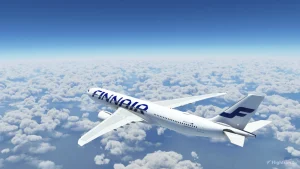Japan Airlines Premium Economy Review
While travelling to London with Japan Airlines recently, we were able to experience an older Japan Airlines Premium Economy cabin and seat on the Boeing 777-300 from Sydney to Tokyo. Despite the older model, we didn’t feel like we were missing anything. Although our trip started with a delay, it was an enjoyable experience onboard the recently voted Skytrax Best Premium Economy for 2024.

Check-In
As we mentioned, our flight out of Sydney was delayed 14 hours due to a typhoon, yet the service we received from the airline was excellent! Japan Airlines was very proactive and changed our flights the day prior, meaning we could sleep in and avoid heading to the airport, only to be turned away.
When it did come time to check in, we were able to do so either online and drop our bags or at the dedicated check-in counter at the airport. As we were travelling in Premium Economy, we could check two bags up to 22kg each and have carry-on items totalling up to 9kg.
Once checked in, we headed to the Qantas Business Class Lounge in Sydney. We could access this lounge because Japan Airlines is part of the OneWorld alliance. Japan Airlines is the only airline to offer this perk to Premium Economy passengers, yet it is important to note that it is only available on JAL-operated flights, meaning we didn’t have lounge access on our way home with British Airways.
Japan Airlines Premium Economy Seat
The smaller premium economy cabin has only 36 seats in a 2-4-2 layout. If travelling as a couple or solo, we recommend booking early to secure the two seats by the window for more privacy and space.

While JAL have slowly been retrofitting their older planes with their newer Premium Economy seat design, it was nice to see that some of their newer features, like the hard outer shell of the seat, were also on this older model. While this seat does not have as deep a shell we were still able to recline without disturbing other passengers. The seat is a roomy 19 inches wide with a pitch of 42 inches, which is pretty general among other Premium Economy seats at the moment. If you’re after some more leg room we would recommend booking the seats at the bulkhead.

The seat design does offer some privacy when reclined but for solo passengers there is the additional privacy screen which slides out about 6 inches for more personal space. This divider is translucent and won’t block out light from other passengers’ screens. The seat also features a footrest that drops down from the seat in front, although when the seat is fully reclined with the calf rest, the footrest is blocked from use.
Premium Economy Storage
There is ample storage around the seat. A small backpack can fit under the seat in front, and the seatback pocket is large enough to stow a laptop and other essentials. There are more compartments in the armrest and a small water bottle holder at knee height on the back of the front seat. The space inside the armrest contains USB-A and C ports plus a universal power plug and headphone jack.
Japan Airlines Premium Economy Entertainment
While the screen size is similar to other Premium Economy cabins on the market, the options are a bit dated and limited. There was enough English material, but it started to get limited after a while. Good practice to take a book or two or a tablet, which goes for any airline.

The system featured a few new releases, television series, a selection of music and podcasts, and audiobooks. JAL provided all passengers with basic noise-cancelling headphones, which worked pretty well.
Amenities
Arriving at our seats, we found a variety of amenities, including a lightweight blanket, slippers, an amenity kit, and a pillow. The amenity kit featured a few basic items, including an eye mask, shoehorn, face wipe, ear plugs, toothbrush, and toothpaste. The slippers were a welcome surprise (as this is usually a perk of Business Class), and were great to wear when moving around the plane.


Japan Airlines Premium Economy Dining
When our flight was changed due to the typhoon, our meal requests were unfortunately dropped from our booking due to a flight number change. This is common occurance among many airlines as meals are usually linked to the original flight number. Onboard staff did however go above and beyond to help us get vegetarian meals.
Meal service started with drinks service followed by the meal. We would have preferred it if they had combined the two so it all happened a bit quicker. To maximise “lights down” time on the overnight flight. Perhaps a progressive dimming of the lights could be something many airlines consider.
During the flight, we had a choice of water, juice, soda, beer, wine, sake, and spirits. The wine onboard was a special blend made in Spain, created for the airline by master of wine Kenchi Ohashi and sommelier Motohiro Okoshi for the airplane cabin environment.
There was a wide variety of meals available, including dishes created by chef Naoto Ohno from a restaurant called Syn in Fukuoka. Because we had visited the lounge, we opted for smaller snack options during the flight.
The second meal service happened two hours before landing and was a collaboration between the airline and Japanese design store Muji, served in a cute little takeaway-style box. Unfortunately, there weren’t any vegetarian options for this on our flight. We were not too hungry so had some more snacks.
Japan Airlines Premium Economy Summary
The new Japan Airlines Premium Economy seats are a game changer, setting the airline apart. The extra-wide seats were comfortable and offered a relaxing space for a longer-haul flight. The entertainment options could be expanded, but they offered an experience not heard of in other Premium Economy cabins.

Want to try the World’s Best Premium Economy? Take a look at our latest deals or contact our team of Premium Economy specialists to book today.











